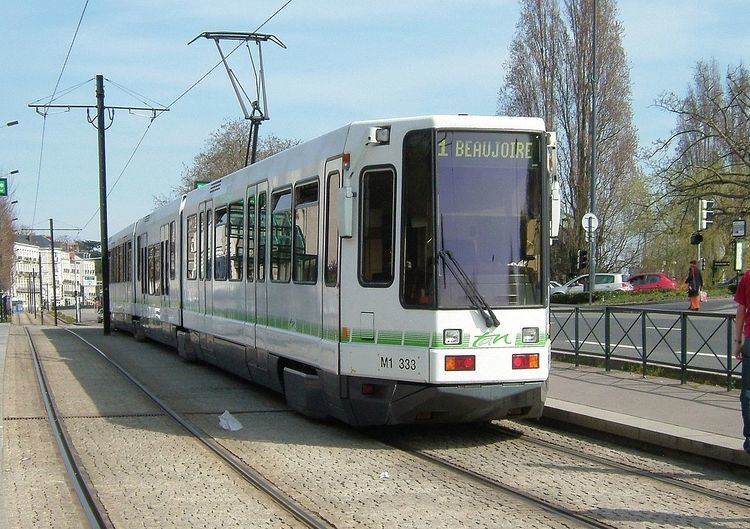 | ||
The Tramway Français Standard (TFS) is a type of tram designed and manufactured by Alstom for use on various tramway systems in France. The TFS is no longer in production, having been superseded by Alstom's Citadis range of tramcars.
Contents
Two different models of the TFS were produced, both being articulated designs. The first model, the TFS-1, was built for the opening of the Nantes tram system in 1985. As built, these were single-articulated 6-axle tramcars with a high floor and steep stepped access from low level boarding platforms. All the tramcars built in this form have since been rebuilt with an added low-floor centre section, thus becoming 8-axle double-articulated cars. Nantes subsequently bought additional TFS-1 trams in this 8-axle configuration.
For the opening of the Grenoble tram system, the TFS-2 variant was created. This was also a 6-axle tramcar, but had a different articulation mechanism with a very short central section carried on a four-wheel truck. This allowed a low floor to be carried through most of the length of the car and between the wheels of the central truck, although the sections over the outer bogies are still at a high level and accessed by three steps from the low-floor section. All the doors are within the low-floor section. The advantages of this layout ensured that all subsequent users of the TFS tramcar have adopted the TFS-2 variant.
Technical data
The tramcars are articulated vehicles and are 29.40 m (96.5 ft) long and 44.2 tonnes in weight. The cars cannot work as multiple units, although in case of an emergency two cars may be coupled using an emergency coupling system. With one tramcar not functioning, and braking diminished, speed is limited to 10 km/h (6.2 mph).
The tramcars have the following characteristics:
Car
The tramcar is built on a chassis 2.3 m (7 ft 7 in) wide joined by a central chassis on which is assembled a single pantograph. The car has 3 bogies, one on each ends and one below the central portion.
Only the central parts of the cars have a lowered floor, at 34.5 cm (13.6 in) high to enable access to disabled users by four doors. The parts at both ends of the tramcars are built at 87.5 cm (34.4 in) high accessible by a small three-step staircase.
Motors
The two outer bogies are each equipped with a 275 kW electric motor. This gives the TFS a high acceleration, allowing its use on lines with steep gradients and/or frequent stops, and a top speed of 70 km/h (43 mph).
Operation
Like most modern trams, the TFS vehicles are one-person-operated. The driver is responsible for monitoring activity on board, including the operation of the doors. In most versions of the TFS, a single lever controls both acceleration and braking and contain an integrated dead man's switch. The versions used in Saint-Etienne, though, use pedals, consistent with the earlier PCC trams. The tramcars are equipped with land-train radios and ICS, infrared SAM and onboard pointwork control.
Fleet
The TFS is used on the tramway lines near Paris and in Grenoble, Rouen, Nantes and Saint Etienne.
